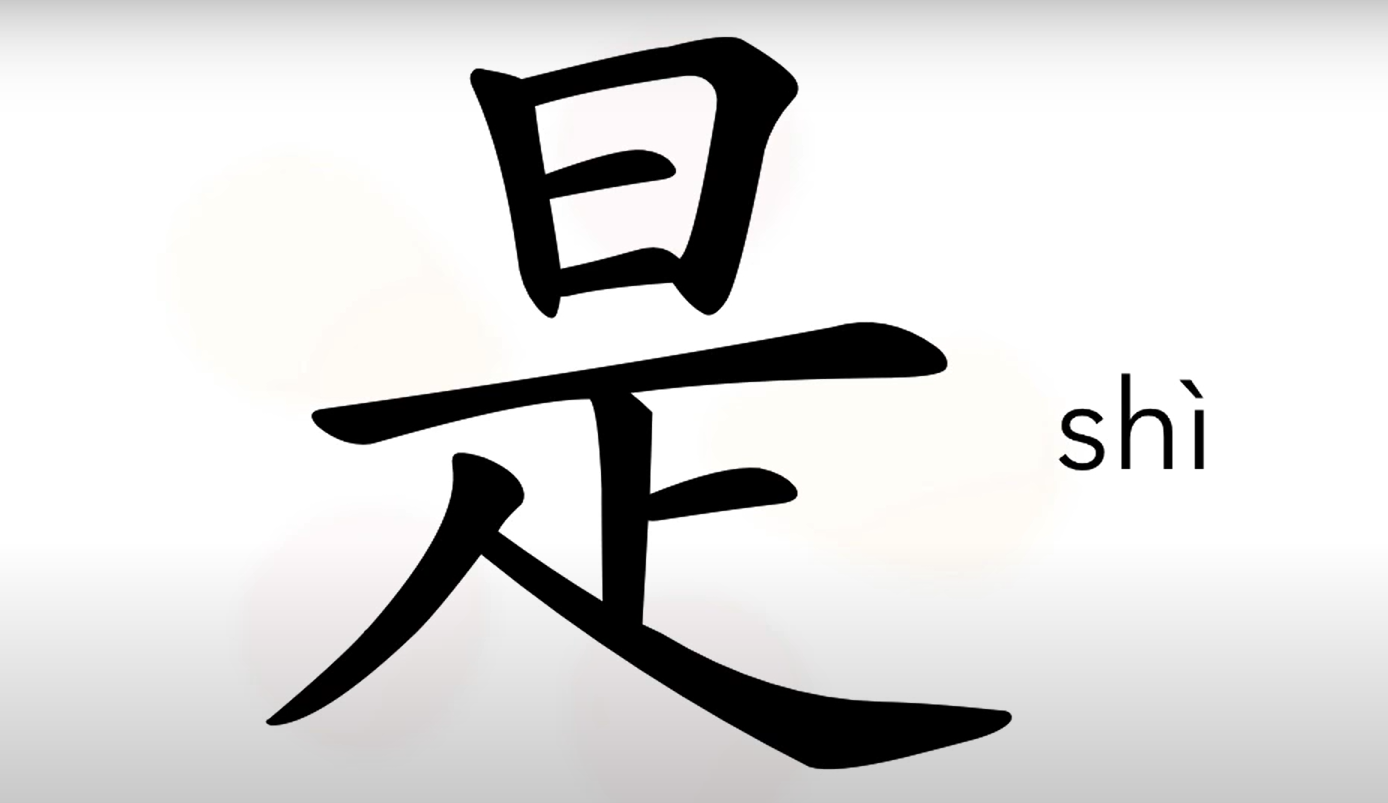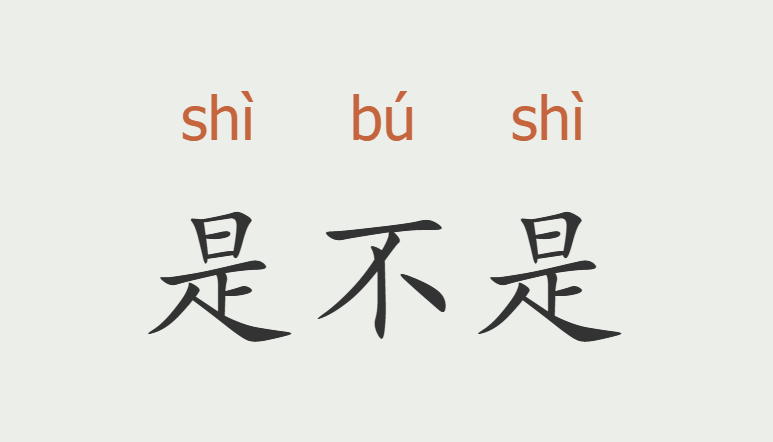How to Use 是 shì in Chinese: A Complete Guide with Grammar and Examples
是 (shì) is one of the most frequently used words in Mandarin Chinese. Simply put, “是” is often translated as “to be” in English, but its usage is not as widespread as the English verb “to be”. This can be confusing for Chinese beginners who expect to use “is”, “am” or “are” in English sentences in the same way as they use “是 (shì)”.
Therefore, understanding how to use 是 shì in Chinese is crucial to mastering Chinese grammar and sentence structure as well as other Chinese language learning. In this article, WuKong Education will analyze how to use shi in Chinese, the meaning of shi in Chinese, and how to avoid the common mistakes of using 是 shi in Chinese, etc. Let’s start with the basics:

The Basic Usage of 是 shì in Chinese: Grammar & Structure
When learning Chinese, one of the first grammatical points most learners come across is “是 shì”. The Chinese character “是” generally functions as a linking verb or adverb in Mandarin. Its main function is to connect the subject and predicate of a sentence, just like the verb “to be” in English.
Learn authentic Chinese from those who live and breathe the culture.
Specially tailored for kids aged 3-18 around the world!
Get started free!However, unlike English, “是 shì” has a more specific usage in Chinese, which also tends to cause confusion for people who are just starting to learn Chinese.
The Grammatical Role of 是 shì
In Mandarin Chinese, “是” is often used to link the subject to a noun or noun phrase that describes or identifies the subject. This is the most basic and direct use of the word “是”.
For examples:
- 我是学生。 (Wǒ shì xuéshēng.) – “I am a student.”
“我是” links the subject “我” (I) to the predicate “学生” (student).
- 他是老师。 (Tā shì lǎoshī.) – “He is a teacher.”
In this sentence, “他” (he) is the subject, and “老师” (teacher) is the predicate describing what he is.
Sentence Structure with 是 shì
To use “是” correctly, it’s essential to understand its basic sentence structure. The standard sentence format:
- Subject + 是 shì + Predicate (noun/noun phrase)
This structure remains consistent in declarative, negative, and interrogative sentences.
Examples of basic sentence patterns:
这是一只猫。 (Zhè shì yī zhī māo.) – “This is a cat.”
- Subject: 这 (this)
- Verb: 是 (is)
- Predicate: 一只猫 (a cat)
北京是中国的首都。 (Běijīng shì Zhōngguó de shǒudū.) – “Beijing is the capital of China.”
- Subject: 北京 (Beijing)
- Verb: 是 (is)
- Predicate: 中国的首都 (the capital of China)
These examples illustrate how 是 shì identifies or defines the subject about the noun or noun phrase that follows.

When to Use 是 shì in Chinese?
The word “是” is very commonly used in Chinese sentences. However, the Chinese word “是 shì” is used differently than the English verb, and many Chinese learners consider “是” to be one of the most confusing characters. In the next section, we will explain the situations in which you should use “是 shì”.
1. To agree with someone in a conversation
When having a conversation or in other situations where communication is required, “是” can express agreement with the person you are listening to.
To show agreement, you can use the following phrases:
是的 (shì de) indicates mild agreement. It’s the same as “yeah” in English. It is mainly used to show the speaker that you are paying attention to them, empathize with them, or want to hear more from them.
是啊 (shì a) is an expression of stronger agreement. It shows that you agree and are keen to hear what the other person has to say.
就是 (jiù shì) is the highest level of agreement expressed in any phrase. It’s like saying in English, “Of course!” or “I know!” The same. It is used to express firm agreement.
2. To attach two nouns
The Chinese character “是” is used in the same way as the English verb “to be” to connect two nouns (or pronouns) in a sentence to explain what something or someone is. For examples:
我是一个老师。(wǒ shì yí gè lǎo shī — I am a teacher.)
这是手机。(zhè shì shǒu jī — This is a cell phone.)
葡萄是一种水果。(pú táo shì yī zhǒng shuǐ guǒ — Grapes are a kind of fruit.)
3. To confirm information
You can try using different Chinese nouns and verbs in different situations and scenarios. For example, you can use the Chinese character “是” to confirm something or any information.
All you need to do is add the phrase “是不是” (shì bú shì) at the end of the sentence to confirm that something is true. With this phrase, you can confirm any type of information, and it’s not limited to sentences that already contain “是” as the main verb. Now let’s look at a few examples:
你在吃饭,是不是?(Nǐ zài chī fàn, shì bú shì? — You are eating, aren’t you?)
你是台湾人,是不是?(nǐ shì Táiwān rén, shì bú shì? — You are Taiwanese, aren’t you?)

4. To ask a question
The phrase 是不是 (shì bú shì) can also be used as a way to ask a question in Chinese. If you want to make a question out of a sentence that has 是 shì as its verb, you can do it by substituting 是 with 是不是, literally meaning “be not be”.
这是不是手机?(zhè shì bú shì shǒu jī. — Is this a cell phone?)
那是不是玩具?(nà shì bú shì . — Is that a toy?)
苹果是不是一种水果?(píng guǒ shì bú shì yī zhǒng shuǐ guǒ? — Are apples a kind of fruit?)
5. To keep the conversation going
If you’re having a conversation and you want to keep talking to the other person or you want them to say more, try saying “是吗” (shì ma). It is “Oh, really?” or “Yes?” in Chinese.
The phrase “是吗” allows people to express themselves more. As long as you don’t sound overly skeptical, the other person will think you’re interested in what they have to say and will continue to talk.
When Not to Use 是 shì in Chinese?
Similarly, learning the situations in which it is not necessary to use the word “是” is essential to having long and easy conversations in Chinese. Below we will give some examples of situations where “是” is not necessary.
1. To attach a noun and a prepositional phrase: use 在 zài instead
In English, we say “My friend is in the library” or “The cat is on the table.” But in Chinese, we use “在” (zài).
The formula for this is Subject + 在 (zài) + Location (+ Preposition)
我的朋友在图书馆 (wǒ de péng yǒu zài tú shū guǎn. — My friend is at the library.)
我的朋友在图书馆里 (wǒ de péng yǒu zài tú shū guǎn lǐ. — My friend is in the library.)
猫在桌子上 (māo zài zhuō zi shàng. — The cat is on the table.)
2. To connect a noun and an adjective: use 很 hěn instead
In English, we say “The child is tall” or “The toy is soft”. And saying “孩子是高” (hái zi shì gāo) or “玩具是软” (wán jù shì ruǎn) in Chinese doesn’t fit the Chinese speakers’ habit. Native Chinese speakers don’t say this to connect these concepts. They would use “很” (hěn) instead.
The correct usage is as follows:
孩子很高。 (hái zi hěn gāo — The child is tall.)
玩具很软。 (wán jù hěn ruǎn — The toy is soft.)

3. To say “there is/are”: use 有 yǒu instead
In English, we use “to be” to indicate the presence of an object: “There’s a dog on the chair”, “There are butterflies in the room” etc. However, in Chinese, we don’t use the corresponding “to be” — “是” to indicate the presence of an object.
In Chinese we need to use 有 (yǒu), meaning “to have”. This word is placed at the beginning of a sentence without a subject.
有只狗在椅子上。 (yǒu zhǐ gǒu zài yǐ zi shàng — There is a dog on the chair.)
有蝴蝶在房间里。 (yǒu hú dié zài fáng jiān lǐ — There are butterflies in the room.)
4. As a helping verb: Use 在 zài instead
English speakers use the verb “be” as part of the present or past progressive tense. In Chinese, however, Chinese people generally use “在” (zài) to emphasize the continuity of the event they are talking about.
Therefore, the writing formula becomes Subject + 在 (zài) + Verb (+ Object). For instance:
我在跑步。(wǒ zài pǎo bù — I am running.)
他在吃香蕉。(tā zài chī xiāng jiāo — He is eating a banana.)
FAQs on How to Use Shi in Chinese
1. Are there any other special sentences for 是 shì?
Yes. Although the basic sentence structure of “是” is simple, it also appears frequently in negative sentences. These variations are essential in communication in any language and are common in everyday conversation.
Negative sentences with 是
To form a negative sentence, simply add “不” (bù) before “是”: subject + 不是 + predicate
Examples:
他不是医生。 (tā bú shì yī shēng — He is not a doctor.)
这不是我的书。(zhè bú shì wǒ de shū — This is not my book.)
2. Can 是 shì be used for emphasis?
Yes, 是 is often used for emphasis in Chinese, especially in “是…的” structure of sentences. It emphasizes some aspect of the sentence, such as the time, place or the performer of the action.
Examples:
我们是在北京见面的。 (wǒ men shì zài Běi jīng jiàn miàn de — It was in Beijing that we met.)
这件事是他做的。 (zhè jiàn shì shì tā zuò de — It was him who did this.)
This structure is often used when telling a story or explaining details.

Conclusion
These were the uses of shi in Chinese. You can try having a conversation with a native Chinese speaker to see how they organize their sentences and use verbs. This will reinforce the information you have learned about “是”.
If you still want to learn more about Chinese and speak it like a native speaker, you can also learn it through WuKong Chinese, which will greatly improve your Chinese language skills!
Learn authentic Chinese from those who live and breathe the culture.
Specially tailored for kids aged 3-18 around the world!
Get started free!
Master’s degree from Yangzhou University. Possessing 10 years of experience in K-12 Chinese language teaching and research, with over 10 published papers in teh field of language and literature. Currently responsible for teh research and production of “WuKong Chinese” major courses, particularly focusing on teh course’s interest, expansiveness, and its impact on students’ thinking development. She also dedicated to helping children acquire a stronger foundation in Chinese language learning, including Chinese characters, phonetics (pinyin), vocabulary, idioms, classic stories, and Chinese culture. Our Chinese language courses for academic advancement aim to provide children with a wealth of noledge and a deeper understanding of Chinese language skills.





![20+ Chinese Curse Words Explained: Common Swear Words [with Pinyin & Meanings] 20+ Chinese Curse Words Explained: Common Swear Words [with Pinyin & Meanings]](https://wp-more.wukongedu.net/blog/wp-content/uploads/2025/03/image-353-520x293.png)





![Top 4 Online Platforms for Affordable Chinese Class [2025] Top 4 Online Platforms for Affordable Chinese Class [2025]](https://wp-more.wukongedu.net/blog/wp-content/uploads/2024/01/image-37-520x293.png)








![50 Best Mother's Day Quotes; Wishes; Messages [2025] 50 Best Mother's Day Quotes; Wishes; Messages [2025]](https://wp-more.wukongedu.net/blog/wp-content/uploads/2024/04/image-6-520x293.jpeg)







Comments0
Comments